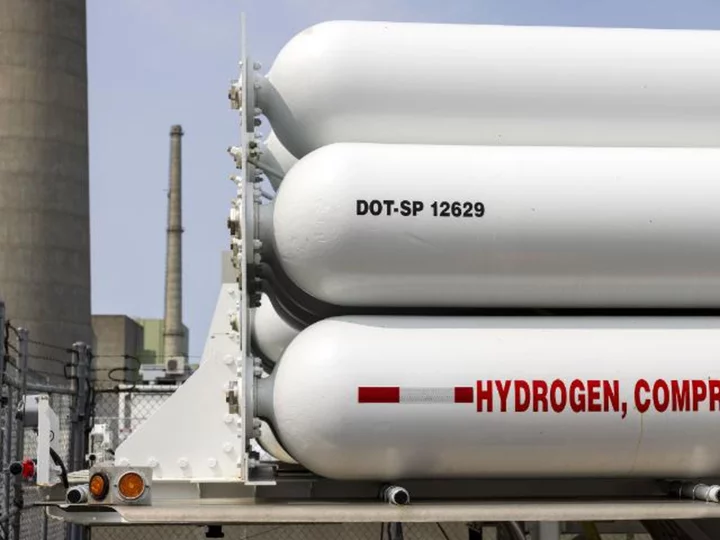The Biden administration on Monday announced a goal to produce 50 million metric tons of clean hydrogen fuel by 2050 -- an ambitious roadmap that, if successful, would cut around 10% of the country's planet-warming pollution by the same date.
For the US to transition to clean energy, it will take technologies beyond wind and solar to fuel airplanes, generate electricity and power industry. And the Biden administration is increasingly looking towards hydrogen to meet the demand -- a source of energy that burns without pollution and that can be derived from water. But it also could be generated by the fossil fuels it seeks to replace.
Clean hydrogen is the "Swiss army knife of zero-carbon technologies," US Energy Secretary Jennifer Granholm told reporters Monday. "If we get it right, it can do just about everything."
Granholm and President Joe Biden's top climate adviser, Ali Zaidi, said they would reveal in September the locations of several new "hydrogen hubs" around the country. The hubs would serve as pilot projects for a reimagined, hydrogen-fueled economy that Zaidi said would "fundamentally change the way we build things in America."
"We believe it could decarbonize some of our hardest to abate sectors, like heavy industry and transportation," Granholm said. "It could also generate clean, dispatchable electricity and provide options for long-duration energy storage."
But hydrogen has its critics -- namely, those who are concerned about a potential over-reliance on hydrogen that is derived from fossil fuels like methane gas, versus hydrogen that can be created from water.
And while there's intense work happening on the technology, it is still years from being fully commercially viable.
"When you're creating an entirely new sector, which is really what this hydrogen clean economy will be, you have to do everything everywhere all at once," Granholm said.
Why hydrogen
The electricity sector is already seeing a shift to renewable energy like solar and wind, which are steadily replacing fossil fuels like coal and natural gas. But solar and wind energy aren't going to be helpful for the largest, most polluting vehicles and industries where batteries are not an option.
This is where hydrogen has the most potential.
Airplanes, for instance, require so much energy that any battery used to store electricity from solar or wind would likely be too large and heavy. Hydrogen, on the other hand, can come in liquid form and is far lighter.
Hydrogen also has the potential to help decarbonize heavy industry, which can be tough to power with wind and solar.
It factors into the Biden administration's overall strategy to decarbonize the power sector -- which holds the key to then decarbonizing transportation due to the rise of electric cars. Renewables such as wind and solar have a big role to play in zero-emissions power, but because sunlight and wind are intermittent, there is a scramble to find a source of electricity that can be easily turned on with the flick of a switch.
Hydrogen is one of the technologies that could help. The Environmental Protection Agency is factoring it into their proposed rule to cut power plant emissions -- suggesting that natural gas plants could co-fire with clean hydrogen.
Why hydrogen is a controversial 'clean' energy source
"Clean" hydrogen is a fraught term because hydrogen can be derived from several different sources -- some cleaner than others.
Green hydrogen, the cleanest form, is derived from electrolyzing water -- putting an electric current through water to separate molecules that can then be used as fuel. However, green hydrogen is only truly zero-emissions if the electricity it's created with comes from renewable sources.
Gray hydrogen is commonly used today and is derived from fossil fuels -- including methane gas -- and contributes to planet-warming emissions.
Blue hydrogen is also derived from fossil fuels like methane gas, but unlike gray hydrogen, its emissions are captured -- making it a cleaner source of fuel.
Gray and blue hydrogen have drawn concern from environmental groups for their ties to fossil fuels. And even green hydrogen has some detractors who worry that using wind and solar to power hydrogen isn't the best use of renewable energy.
Still, Biden administration officials made clear they see the technology as one with huge potential to cut emissions and create new jobs.
Zaidi on Monday spoke of a factory in Minnesota that used to make diesel engines but is now manufacturing electrolyzers to make hydrogen. And Granholm estimated clean hydrogen would create around 100,000 jobs by the end of the decade.
"This is an enormous opportunity," Granholm said.

